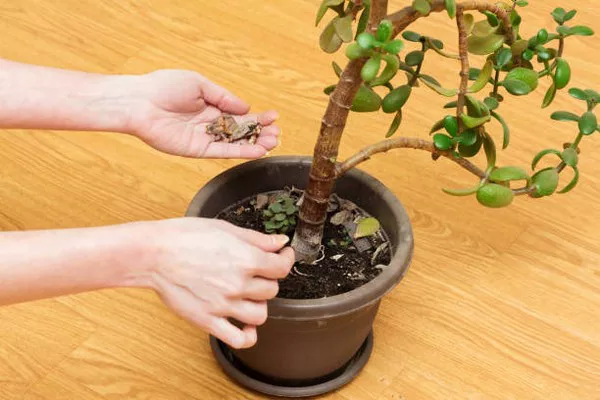Jade plants (Crassula ovata), beloved for their captivating appearance and low-maintenance nature, have gained immense popularity as ornamental houseplants. Characterized by their thick, succulent leaves and strikingly vibrant green color, jade plants are not only aesthetically pleasing but also possess the ability to grow into impressive specimens. Understanding the potential size that jade plants can reach is essential for their proper care and maintenance. This article delves into the fascinating world of jade plant growth, exploring the factors that influence their size, and offering insights into cultivating these captivating plants.
The Nature of Jade Plant Growth
Jade plants are known for their slow but steady growth. Native to arid regions of South Africa, these succulents have adapted to thrive in conditions where water is scarce. Their ability to store water in their leaves allows them to withstand dry spells, making them excellent candidates for low-water environments. This trait also contributes to their characteristic growth pattern. Unlike some rapidly growing plants, jade plants invest their energy in gradually developing sturdy stems and thick leaves, resulting in a compact and sturdy appearance.
Factors Influencing Jade Plant Size
Several factors influence the ultimate size that a jade plant can achieve. Understanding these factors can help plant enthusiasts create optimal conditions for their jade plants to thrive:
1. Age:
Age is a significant determinant of jade plant size. Young jade plants typically start with a single stem and a few leaves. As they age, they develop additional stems, resulting in a fuller and more robust appearance. With time, mature jade plants can grow quite large.
2. Container Size:
The size of the container in which a jade plant is grown plays a role in limiting its growth. Jade plants have a natural tendency to grow larger when provided with ample space for their roots to spread. Repotting a jade plant into a larger container when it becomes root-bound can encourage continued growth.
3. Light:
Adequate light is crucial for the healthy growth of jade plants. Insufficient light can lead to elongated stems and sparse growth. When grown in bright, indirect light, jade plants develop more compact growth habits, resulting in a more visually appealing appearance.
4. Watering:
Overwatering is a common mistake made when caring for jade plants. Their succulent nature allows them to endure periods of drought. Frequent and excessive watering can lead to root rot and hinder growth. Allowing the soil to dry out between watering sessions promotes healthier growth.
5. Pruning:
Pruning is an effective technique for controlling the size and shape of jade plants. Regularly removing dead or overgrown leaves can redirect the plant’s energy toward new growth. Pruning can also help maintain a desirable size, especially in indoor settings with limited space.
Size Variability in Jade Plants
Jade plants exhibit a considerable degree of size variability based on their growth conditions, care regimen, and genetics. While some jade plants remain relatively compact, others can grow to impressive sizes under optimal conditions. A well-cared-for indoor jade plant can reach heights of 2 to 3 feet and span a similar width, creating a striking focal point in any living space. In their natural habitat, jade plants can grow even larger, reaching heights of up to 10 feet or more when provided with ample sunlight and space to spread their roots.
Cultivating Large Jade Plants
For enthusiasts who aspire to cultivate larger jade plants, certain practices can be employed to encourage healthy and robust growth:
Selecting the Right Location: Placing jade plants in an area with bright, indirect sunlight is essential. South or west-facing windows often provide ideal light conditions for optimal growth.
Choosing the Appropriate Pot: When potting or repotting a jade plant, select a container that allows room for growth. A pot that is 2 inches larger in diameter than the current pot is generally a good choice.
Proper Watering: Allow the soil to dry out before watering your jade plant again. Water thoroughly, ensuring that excess water drains from the pot to prevent root rot.
Pruning: Regularly prune your jade plant to remove dead or leggy growth. This will encourage new growth and help maintain a more compact form.
Fertilization: Fertilize your jade plant during its active growing season (spring and summer) with a balanced, diluted fertilizer. Avoid over-fertilizing, as this can lead to excessive growth at the expense of overall plant health.
Repotting: As your jade plant grows, it may become root-bound. Repotting it into a larger container every 2-3 years will provide it with the space it needs to continue growing.
Conclusion
Jade plants are not only charming additions to indoor and outdoor spaces but also offer an intriguing journey through the world of plant growth. Their slow and deliberate growth pattern, influenced by factors such as age, light, water, and pruning, results in a wide range of sizes among these plants. From compact indoor adornments to impressive outdoor specimens, jade plants can thrive and flourish when provided with the appropriate care and attention. By understanding the dynamics of jade plant growth, enthusiasts can cultivate these succulents into stunning examples of natural beauty.


